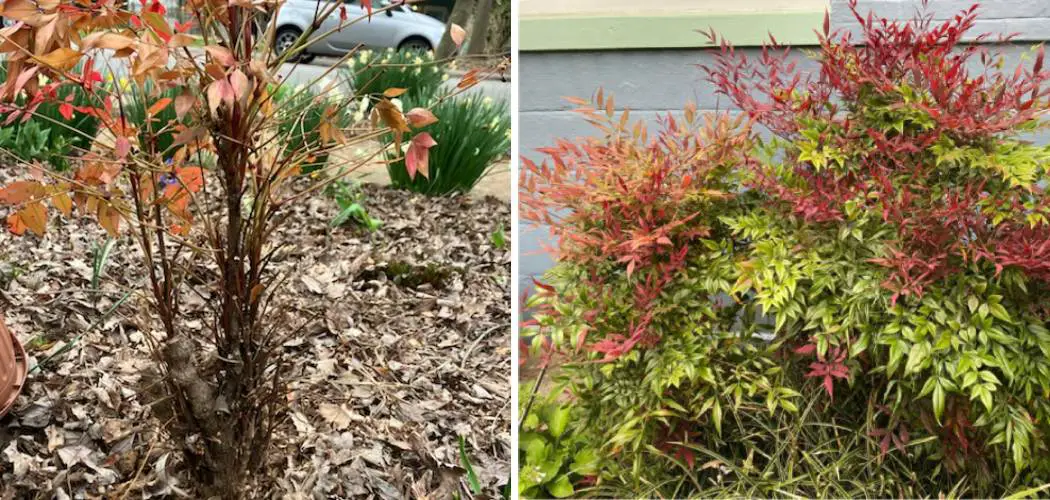Is your nandina looking a bit worse for wear? Whether you’re a seasoned gardener or a beginner, it can be disheartening to see your plants struggle. In this article, we’ll guide you through how to tell if a nandina is dead, also known as heavenly bamboo, is truly dead or just in need of some TLC. From checking for signs of life in the branches to inspecting the roots and understanding seasonal changes, we’ll provide you with practical tips to help you assess and revive your nandina, ensuring it continues to thrive in your garden.
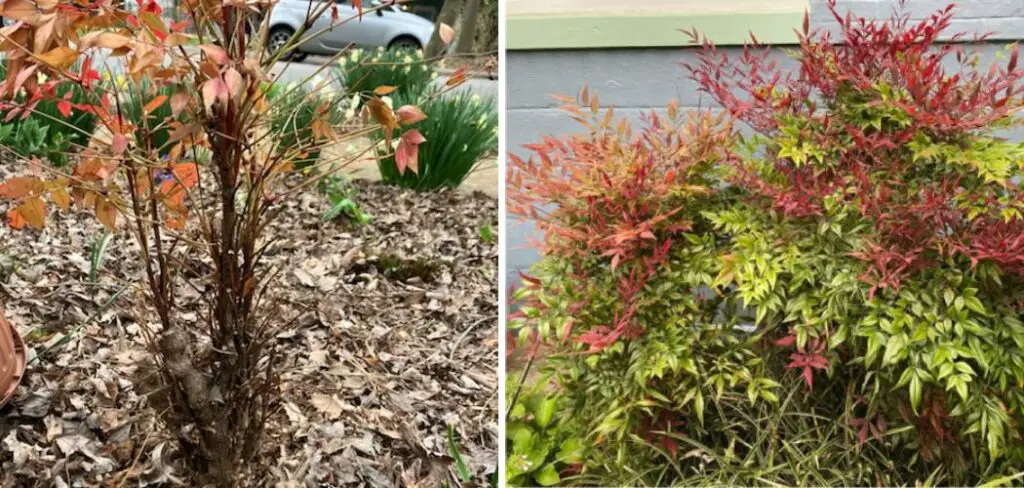
Importance of Determining if a Nandina Is Dead
Understanding whether your nandina is truly dead or simply dormant is crucial for several reasons. First and foremost, it allows you to make informed decisions about your gardening efforts and resource allocation. If a nandina is still alive, it may just require care and attention to recover, saving you from unnecessary replacements.
Additionally, identifying dead plants prevents wasted time and effort on maintenance that won’t yield results. Furthermore, maintaining a healthy garden ecosystem is essential; dead or dying plants can attract pests and diseases that might affect surrounding greenery. By accurately assessing the status of your nandina, you can enhance the overall health and aesthetics of your garden.
Understanding Nandina
Nandina, commonly referred to as heavenly bamboo, is an evergreen shrub known for its vibrant foliage and striking berries. Native to East Asia, this adaptable plant can thrive in a variety of climates, making it a popular choice for gardeners in many regions.
Nandina typically features feathery, compound leaves that exhibit a stunning transformation in colour throughout the seasons, ranging from bright green in the spring to vivid reds and purples in the fall.
Moreover, its small white flowers bloom in the spring, followed by clusters of attractive red berries that persist into winter, providing visual interest even in the colder months.
Understanding the growth habits and requirements of nandina is vital for fostering a healthy specimen, as well as recognizing when it is in distress. Proper care, including suitable light conditions, watering practices, and soil preferences, can greatly influence the overall vitality and longevity of this beautiful shrub in your garden.
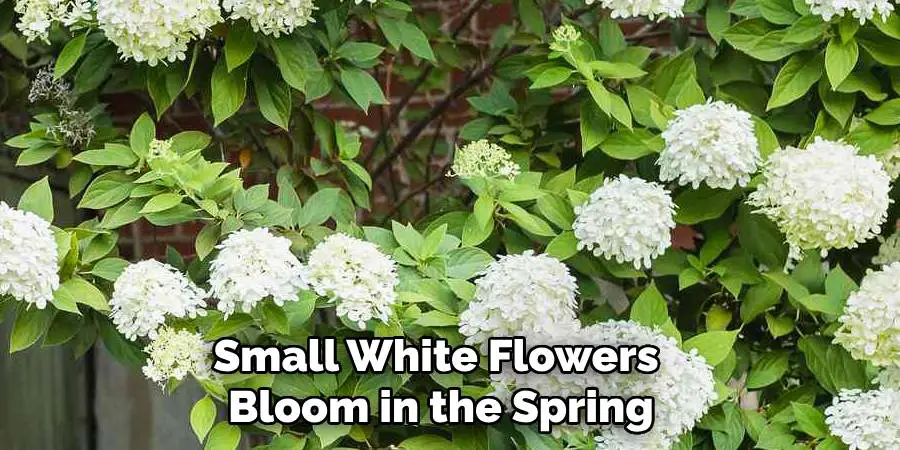
General Characteristics of Nandina Plants
Nandina plants are distinguished by their unique features and adaptability. Typically growing between 3 to 8 feet tall, these shrubs possess dense, bushy growth habits that make them ideal for hedges or foundation plantings.
The leaves of nandina are particularly notable, as they are feather-like and form in a compound structure, providing a lush appearance throughout the year.
In addition to their foliage, nandina is renowned for its seasonal transformations; young leaves emerge in a vibrant green, maturing to deep red and purple hues in fall. Flowering occurs in late spring, presenting small, delicate white blooms that develop into clusters of bright red berries, often lasting into winter and attracting local wildlife.
Nandina is resilient to various soil types and light conditions, preferring partial to full sun, which further contributes to its popularity among gardeners. Overall, its ornamental appeal and low maintenance requirements make nandina a valuable addition to any garden landscape.
9 Methods How to Tell if a Nandina Is Dead
1. Examining the Foliage
The foliage of nandina is a primary indicator of the plant’s health. Healthy nandina leaves are vibrant, often showcasing a spectrum of colors from green to red, depending on the season. If your nandina’s leaves have turned entirely brown or black and feel dry and brittle to the touch, this is a significant warning sign. However, it is essential to differentiate between seasonal changes and signs of distress.
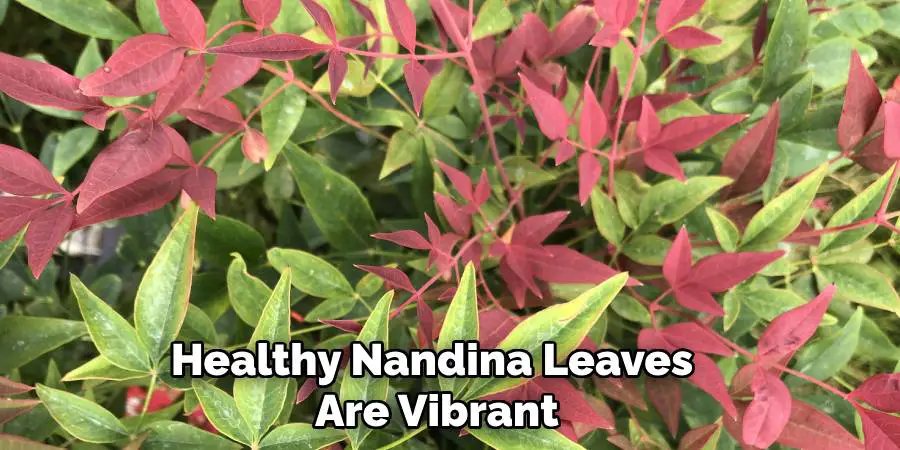
In the fall and winter, nandina naturally changes color and may even shed some leaves. Consistent, widespread browning and crisping of leaves during the growing season, coupled with no signs of new growth, suggest that the plant is likely dead.
2. Checking the Stems
Stems can provide vital clues about the condition of your nandina. Start by performing a simple scratch test. Use your fingernail or a small knife to gently scrape away a small section of the outer bark on the stem. If the underlying tissue is green and moist, the stem is still alive.
Brown, dry, or brittle tissue indicates that the stem is dead. It’s important to check several stems throughout the plant, as some parts may die off while others remain alive. If you find no green tissue on any stem, the entire plant is likely dead.
3. Observing the Root System
Roots are the lifeline of any plant, and their condition can tell you a lot about the overall health of your nandina. Carefully dig around the base of the plant to expose some of the roots. Healthy roots are typically white or light tan and firm to the touch. If the roots are brown, black, mushy, or emit a foul odor, they are rotting, and the plant is likely dead.
Root rot is often caused by overwatering or poor drainage. If you find that the majority of the root system is compromised, it’s a clear indication that the nandina has succumbed to these conditions.
4. Inspecting for New Growth
One of the most definitive signs of life in any plant is new growth. In the growing season, healthy nandina will produce new shoots and leaves. If your nandina has not shown any new growth for an extended period, this could be a sign of distress or death.
Pay close attention to the base of the plant and along the stems for any signs of budding or new leaves. The absence of new growth, especially during the spring and summer months, is a strong indicator that the plant may be dead.
5. Assessing the Plant’s Flexibility
Another method to determine if your nandina is dead is to test the flexibility of its branches. Live branches should be somewhat pliable and bend without breaking easily. If the branches snap with little effort, this indicates that they are dead and dry. On the other hand, if they bend but do not break and you can feel some elasticity, there is a chance that the plant is still alive. It’s crucial to test several branches to get an accurate assessment of the plant’s overall condition.

6. Checking Soil Moisture Levels
Soil moisture is a critical factor in the health of your nandina. Both overwatering and underwatering can lead to plant death. Check the soil around the base of the plant to assess its moisture levels. If the soil is consistently waterlogged, this could lead to root rot, which may result in the plant’s death.
Conversely, if the soil is bone dry and has been so for an extended period, the plant may have suffered from severe drought stress. Consistent, extreme soil moisture conditions are often a sign that the plant has died.
7. Looking for Pest Damage
Pests can cause significant damage to nandina, sometimes leading to the plant’s death. Inspect the plant for signs of pest infestation, such as holes in the leaves, chewed stems, or the presence of insects. Common pests that affect nandina include aphids, scale insects, and spider mites.
Severe infestations can weaken the plant, making it more susceptible to diseases and environmental stresses. If your nandina shows extensive pest damage and no signs of recovery despite treatment, it is likely dead.
8. Evaluating Seasonal Behavior
Understanding the seasonal behavior of nandina can help you distinguish between natural changes and signs of death. Nandina is known for its seasonal variations in foliage color and density. During the fall and winter, it is normal for the plant to lose some leaves and change color. However, once spring arrives, the plant should start showing new growth. If your nandina does not exhibit this behavior and remains dormant throughout the growing season, it is likely to be dead.
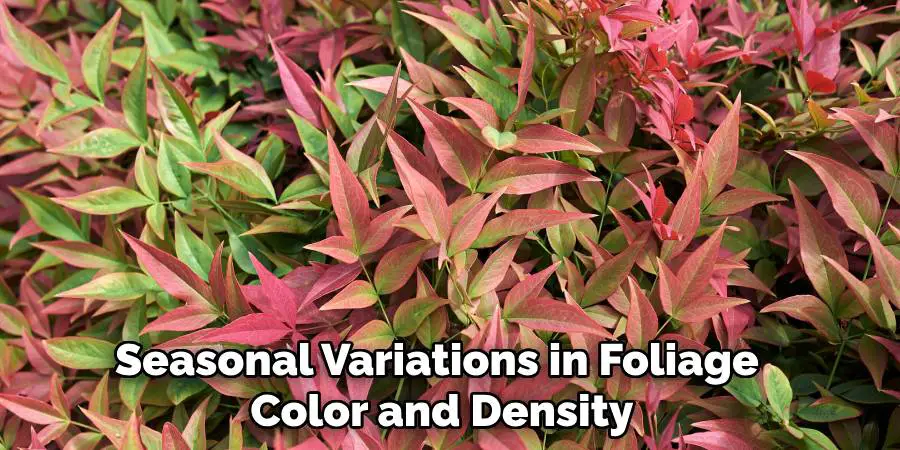
9. Considering Environmental Factors
Nandina is a hardy plant that can tolerate different environmental conditions. However, extreme changes in temperature or exposure to harsh weather conditions can cause significant stress and potentially kill the plant. For example, prolonged periods of frost or snow cover can damage nandina’s foliage and stems, leading to death over time. Similarly, excessive heat and drought stress can also cause irreversible damage to the plant. If you suspect that environmental factors have caused your nandina’s decline
Conclusion
Determining whether your nandina is dead or simply experiencing stress is crucial for its care and maintenance. By carefully assessing the leaves, stems, roots, new growth, plant flexibility, soil moisture, pest damage, seasonal behavior, and environmental factors, you can gain valuable insights into the overall health of your plant.
Regular monitoring and early intervention can often revive a struggling nandina, allowing it to flourish once more. However, if the signs indicate that your plant has indeed succumbed, it may be time to consider replacing it or exploring other options for your garden. Thanks for reading, and we hope this has given you some inspiration on how to tell if a nandina is dead!
About
Outdoor Fixes is a distinguished figure in the world of Diy design, with a decade of expertise creating innovative and sustainable Diy solutions.
His professional focus lies in merging traditional craftsmanship with modern manufacturing techniques,
fostering designs that are both practical and environmentally conscious. As the author of diy,
outdoorfixes delves into the art and science of outdoorfixes-making, inspiring artisans and industry professionals alike.
Education RMIT University
(Melbourne, Australia) Associate Degree in Design (Outdoor Fixes) Focus on sustainable design, industry-driven projects,
and practical craftsmanship. Gained hands-on experience with traditional and digital manufacturing tools, such as CAD and CNC software.
Nottingham Trent University
(United Kingdom) Bachelor’s in outdoorfixes.com and Product Design (Honors) Specialized in product design with a focus on blending creativity with production
techniques. Participated in industry projects, working with companies like John Lewis and Vitsoe to gain real-world insights.
Publications and Impact
In diy, Outdoor Fixes his insights on indoor design processes, materials, and strategies for efficient production.
His writing bridges the gap between artisan knowledge and modern industry needs, making it a must-read for both budding designers and seasoned professionals.

